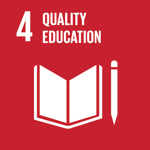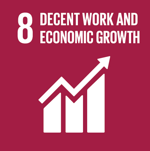Sustainable Intensification of Dairy
 Uruguay
Uruguay
 Argentina
Argentina
 Costa Rica
Costa Rica
 Chile
Chile
 Dominican Republic
Dominican Republic
 Ecuador
Ecuador
 Honduras
Honduras
 Nicaragua
Nicaragua
 Panama
Panama
 Paraguay
Paraguay
 Venezuela
Venezuela
Executive Summary
Global population is expected to continue increasing, implying an increase in food demand. In order to supply this demand, increases in productivity will be required.
Latin America and the Caribbean (LAC) have ample natural resources for dairy production, enough even to double current production levels. However, would it be feasible to increase productivity, and at the same time to improve family’s income and wellbeing while minimizing environmental impacts?
To talk about sustainable intensification in LAC was a challenge, given the high diversity of dairy production systems, the lack of characterization of these systems and the cultural differences between the different countries. Through Project LACTIS a cooperation platform was developed which enabled the establishment of a baseline and development of common indicators in order to characterize systems, validate improved systems, and at the same time strengthen technicians and researchers’ abilities while spreading knowledge.
The technological solution
To evaluate sustainable intensification strategies, the ‘Dairy systems simulation model’ and the ‘Dairy Monitor’ were developed and adapted to the dairy production systems of the region (LAC). The simulation model allows for modelling of baseline production systems in each country and under improved scenarios using few inputs that are easy to obtain on-farm, evaluating the biophysical, economic, social, and environmental impact. 'Dairy Monitor 2' allowed the monitoring of the physical, economic, social, and environmental indicators on commercial farms where planned changes were implemented. The proposed scenarios were validated on monitored commercial farms, with the interaction of technicians and farmers, resulting in knowledge exchange and dissemination.
Results
A baseline of regional dairy production systems was established through the classification and description of the production systems in 11 LAC countries. In addition, improved strategies for sustainable intensification were selected through the agreed selection of key performance indicators of biophysical, economic, social and environmental performance. The project achieved the simulation of sustainable intensification strategies in each country through the development and adaptation of the ‘Dairy systems simulation model’ applicable to LAC dairy systems. Improved systems were developed and validated in 17 pilot farms in Honduras, Panama, Costa Rica, Nicaragua, and Ecuador. A experimental study at INTA Rafaela (TAMBO ROCA 2030 Project) in which two dairy systems with two different animal biotypes are evaluated was started. Capacity building activities reached 450 field technicians, researchers and 200 farmers.
Beneficiaries
Direct beneficiaries
- 15 researchers that work in different topics within dairy and belong to the co-executor and associated organisms of the project. They have been directly involved in all the project activities.
- 450 technicians and researchers have been trained in modelling, validating and implementing environmentally, economically, and socially sustainable dairy intensification systems
- A total of 200 farmers and technicians are directly involved in the project.
Indirect beneficiaries
- It is estimated that the project has indirectly benefited approximately 391,152 farmers, covering around 5,000 hectares with potential for 20 million hectares.
Sustainable Development Goals






Project news
Participating Organizations
Executor
- Instituto Nacional de Investigación Agropecuaria (INIA) - Uruguay
Co-executor
- Instituto Nacional de Tecnología Agropecuaria (INTA) - Argentina
- Centro Agronómico Tropical de Investigación y Enseñanza (CATIE) - Costa Rica
- Fundación ArgenINTA (ARGENINTA) - Argentina
Associated
- Instituto de Innovación Agropecuaria de Panamá (IDIAP) - Panamá
- Instituto Nacional de Innovación y Transferencia en Tecnología Agropecuaria (INTA) - Costa Rica
- Instituto Dominicano de Investigaciones Agropecuarias y Forestales (IDIAF) - República Dominicana
- Instituto Paraguayo de Tecnología Agraria (IPTA) - Paraguay
- Dirección de Ciencia y Tecnología Agropecuaria (DICTA) - Honduras
- Instituto de Investigaciones Agropecuarias (INIA) - Chile
- Instituto Nacional de Investigaciones Agropecuarias (INIAP) - Ecuador
- Instituto Nicaragüense de Tecnología Agropecuaria (INTA) - Nicaragua
- Instituto Nacional de Investigaciones Agrícolas (INIA) - Venezuela
- HEIFER - Nicaragua
Graphics and data
Financing by country (in USD)










































